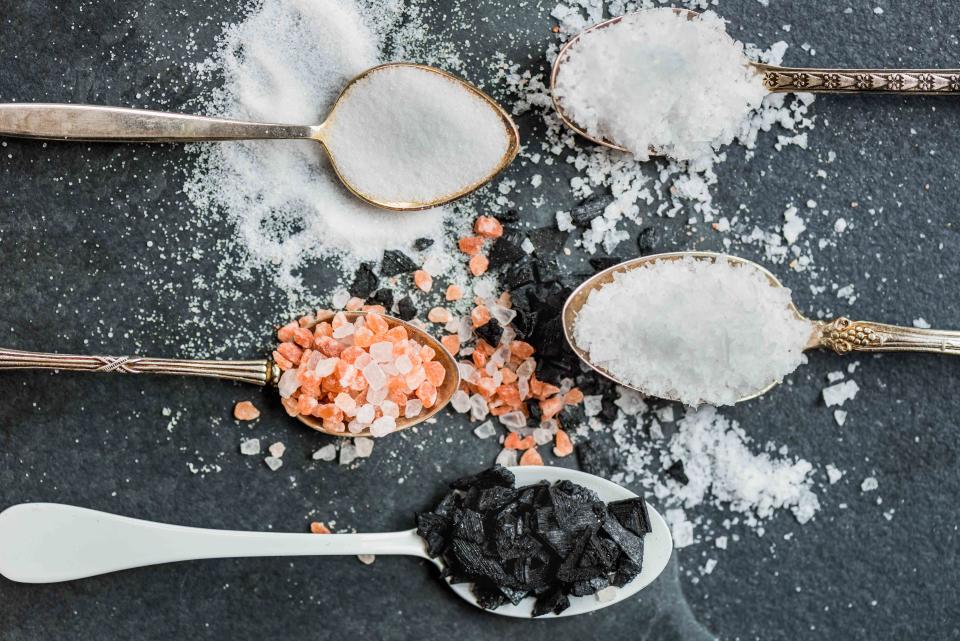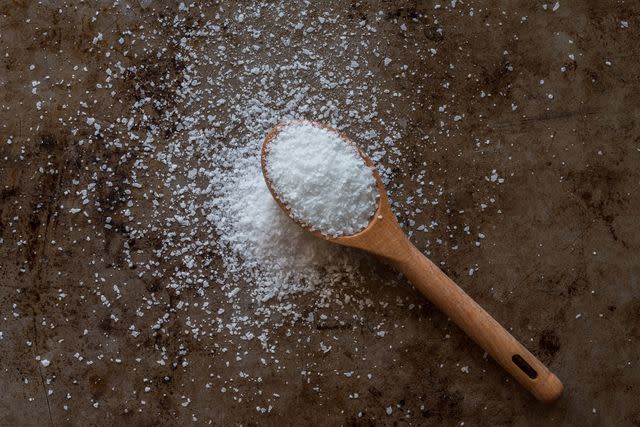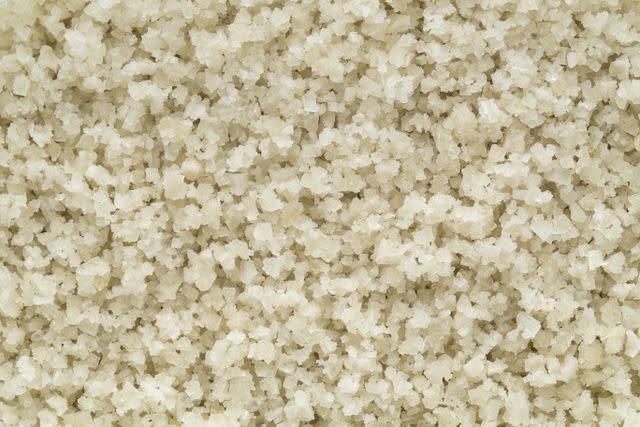The Different Types of Salt and How to Cook with Them
When to use kosher, flaky, pink, black, or table salt to season your food.

Getty Images
It used to be that salt was just … salt. It was finely ground and available at the grocery store in a round cardboard canister with a handy metal spout. But these days, our salt choices have expanded widely; you can buy kosher salt, sea salt, flaky salt, pink salt, or smoked or other flavored salt. You can find whole sections of salt at specialty food shops, and even your local grocery store now carries several types of salt. While this variety is great for cooks, it can be confusing when you are trying to choose the right salt for the job. Here are some of the salts you are likely to find when shopping, and how to use them.

Matejay / Getty Images
Table Salt
This is the OG salt; found in salt shakers everywhere. It often has added iodide for public health reasons (in the 1920s, table salt was iodized to help prevent widespread thyroid issues and goiters). With all the fancier chef-endorsed salts available out there, table salt might seem obsolete for cooking. But it’s still useful in baking, where the fine grains distribute evenly with the flour and other dry ingredients and dissolve easily in wet ingredients. You’ll also want to keep table salt on hand when cooking from older cookbooks. If the recipe does not indicate the kind of salt to use, check the date it was published. Recipes written before 2000 are likely to have been developed and tested with table salt. If you are using kosher salt, you’ll likely need to use a little more salt to get the desired effect, so taste and add more as needed.

Michelle Lee Arnold / Getty Images
Kosher Salt
If you keep only one salt in your kitchen, this is the one to buy. The preferred salt of most professional cooks and passionate home cooks, kosher salt has larger flakes and a less salty flavor than table salt. It does not have iodide or other additives. Originally created to help in the process of koshering meat, kosher salt is most widely available from two brands: Morton’s and Diamond Crystal. Morton’s is a bit denser; the flakes are smaller and saltier than Diamond Crystal, which has more of a light crumbly texture. The large crystals make it easy to portion when seasoning by hand and are visible so you can determine how evenly and effectively dishes have been salted.
Unless a brand is specified in a recipe, assume it calls for Diamond Crystal salt; it’s far easier to add additional seasoning to a dish than it is to try and save something that is over-salted. If you use Morton’s, scale back the amount of salt used by half to start, and then taste before adding more. Note that because Diamond Crystal flakes are a bit smaller and lighter than Morton’s, they will dissolve faster, which means you’ll taste the salt earlier in the process. If you are using Morton’s, give the salt a chance to fully dissolve into the dish before tasting and adjusting the flavor.

Ina Peters / Getty Images
Sea Salt
Sea salt is harvested from evaporated sea water. It is a very clean tasting salt and can contain up to 60 different trace minerals that are healthy micronutrients. Sea salt is available in both coarse and fine versions. Fine sea salt is a perfect salt to keep in your salt shaker for seasoning dishes at the table, or when you need the salt to dissolve quickly for a seasoning spray. Coarse sea salt can be useful when salting meats in advance of cooking. Extra-course sea salt, like Maldon, is best used as a finishing salt.

Fleur de Sel
Fleur de Sel is a flaky salt that originated on the coast of Brittany, France, where it is harvested from the top of saltwater ponds. It is not used during cooking, but as a secondary seasoning. Its large, flat flakes of salt are often used as a finishing salt to impart a mild salty, briny flavor and crunchy texture to salads, baked goods, and other foods where its texture and visual appeal can shine.

Sunyixun / Getty Images
Himalayan Pink Salt
This peachy-pink salt gets its color from iron oxide. The color difference is more striking than any variation in flavor, although it has more mineral notes than other salts. It is most often mined from the Khewra Salt Mine in Pakistan, and used as a finishing salt

Westend61 GmbH / Alamy Stock Photo
Black Salt
Also known as Kala Manak, this is another Himalayan salt. It is used in Indian cooking when its signature sulfur flavor is needed. It gets that flavor from the sodium sulfate found in its composition. Black salt is one of the ingredients that gives chaat masala its signature tangy flavor.

Mashuk / Getty Images
Sel Gris
This grayish fluffy finishing salt is made by the same evaporation method as regular sea salt, but comes from the sea foam, resulting in a salt that has a wonderful texture and light salt flavor. It is better for finishing dishes than as an integrated seasoning, especially in hot dishes, where its delicate flavor and texture would be lost.
With all of these cooking and finishing salts available, you’ll want to mix and match them in your cooking. Be careful about over-salting your food; start with less than you think you need, and build from there.

